





The hay is in the barn. I have always viewed the fall season as a time to reflect on the work and progress we have made throughout the past 12 months. The yearly work plans are almost complete, the financial year is coming to an end, and the dog days of summer are behind us. We now can look forward to flannel apparel and pumpkin spice lattes that the cooler temperatures of fall usher in!
While this time of year can be a cause for celebration, there is still much to be prepared for as hurricane season is still in effect. Our industry and all its members play a critical role in the restoration and recovery efforts after these storms impact the southeastern U.S. Major storm events can present unique challenges to our members and, while the desire to help our communities during these events is likely at the forefront of your thoughts, it is also important to keep safety in mind.
I would like to thank the Chapter’s board members and staff for all the hard work this year. Being a volunteer-based organization, they have dedicated their personal time to ensure that the industry, its future, and its members are being served. They have worked diligently to provide learning opportunities, TRAQ courses, publishing newsletters (thanks Sarah!), and planning the Souther n Chapter Annual Conference for 2023. For the 81st Annual Conference and Trade Show, we will be heading to Chattanooga, Tennessee. We have a great lineup of presenters, trade show exhibitors, and the 41st Tree Climbing Championship planned. Please visit the Southern Chapter website for more details and to register.
Finally, I would like to call on members to become involved in our Chapter and engage with other members by taking advantage of our many opportunities provided by the Chapter (see opportunities to the right). Also, if you are interested in volunteering with the Southern Chapter, I encourage you to visit our website or reach out to our Executive Director, Skip Kincaid Stay safe and hope to see you in Chattanooga. Until then, take the time to saunter through the trees.
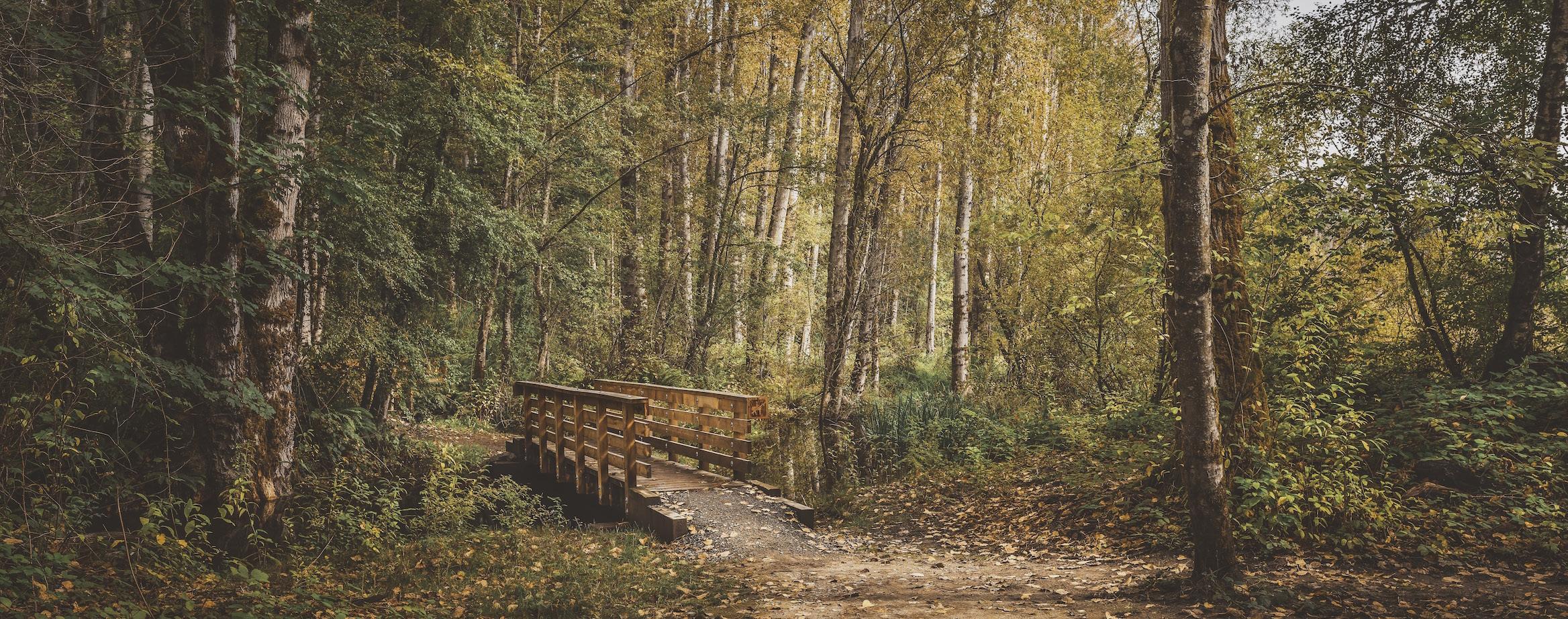
Please share, like, and subscribe to our many social media accounts: Facebook, Instagram, and LinkedIn.



Share the word about our scholarship program (application here). Here’s a chance to assist the next generation of green-industry professionals.
What’s happening in your part of the Southern Chapter? Send in an article for our quarterly newsletter.
Submit a Member Spotlight form about yourself or interview a colleague for a chance to be highlighted in our quarterly newsletter. Please reach out to newsletter@isasouthern.org for the form request and submittal.
Learning Register for the Southern Chapter’s 2023 Annual Conference in Chattanooga! Find details here. Registration opens in mid-December.
When I started in the field of tree care more than 39 years ago, I never dreamed that I would be working as a Natural Resources Manager for the City of Germantown, TN. I actually believed that I would be an industrial tree climber until the day I retired.

Nowadays, one of my primary duties is to manage a tree inventory and report the economic and environmental benefits that the tree canopy provides for our city. I also review development plans and the required tree inventories that are provided by an outside contracted certified arborist. I do not think that I would have been qualified to perform my job had it not been for a series of events that happened early in my career as an arborist. I only mention this to encourage other working arborists to recognize the additional values and the depth of our career choice.
In my early days, I worked for the Davey Tree Company and excelled in what would now be called “old school climbing skills.” Over time, I felt like I had a briefcase full of combined information for what it takes to be a good arborist. I believe it was 1999 when I was asked to teach the 32-hour Certified Arborist Study Course for the landscape division of Southwest Community College in Memphis.
I had completed the first class successfully but before I could begin the second class, I got complacent on the jobsite and received a severe injury. I apparently forgot a chapter of what was in my briefcase regarding “dodging the bullet.” For the next few weeks, I had to rely on two of my closest colleagues to assist with teaching a few of the classes.
While I laid there unable to walk for what seemed like a motionless forever, I came to realize that I might have to make some unscheduled personal changes in my chosen profession. After my recovery I was able to walk but I could not climb until a year and a half later. When the second semester ended, my mind filled with new ideas and I began setting multiple goals on how to bring these ideas to fruition.
One of my arborist friends was the Natural Resource Manager/Forester in the nearby town of Lakeland, TN. I was really fascinated with everything he did as a professional forester. One afternoon he asked if I would be interested in helping him with a tree inventory he had scheduled for a proposed development. The first inventory was a 100-acre tract and it paid a very good hourly rate. I had found a new skill to add to my resume. When all was said and done, I believe I inventoried about 5,000 acres of trees in this town. I was then asked by
the neighboring cities to perform tree inventories for their new developments and to also review other arborist’s tree inventory reports to make sure they were accurate.
Along with consulting with the general public on tree issues, tree inventories had become one of my new arboriculture opportunities. There was a downside, however, to these inventories. Most of the big, beautiful and sometimes ancient trees were going to be removed to build a subdivision, shopping center, parking lot, etc. Not only was I aware of the fact that most of the trees I had counted would be removed, but they would not be replaced.
Once again, the ideas were coming to me on how to approach the cities that I have been working for on mediating the large loss of tree canopies. Some of these ideas included redesigning parking lots, designating certain trees as champion or legacy trees, or designating a percentage of the development as a natural area.
These were not all my ideas but I knew that I could help push them forward and promote conservation. I learned that along with the tree inventories, there has to be a functioning vegetation ordinance to manage how the developers are held accountable for the trees that are removed. Most cities have vegetation ordinances that are well written but may not function properly on a regular basis. In these cases, it takes a lot of planning to bring an ordinance to the desired standard that is required for that particular city.
I was fortunate to learn the municipal side of tree management, and over the last several years I have had the opportunity to introduce other arborists who were seeking new avenues of arboricultural skills to the same task of performing these municipal tree inventories.
A good GPS system to locate the trees really helps. If you are an Urban Forester or a Municipal Arborist required to have a tree management plan, I would highly recommend having the i-Tree app or the Tree Plotter app. As the Natural Resources Manager/ City Arborist for the City of Germantown, I use the Tree Plotter app. I am able to easily update my inventory at any time of the day, even from home. The advantage of having your tree inventory uploaded onto one of these two tree apps is that the app calculates the economic and environmental benefits for you and adds a proven true value of the canopy coverage for your city or town’s tree management plan.
Contact Wes Hopper at whopper@germantown-tn.govBECAUSE SAFETY IS OUR NUMBER ONE CORE VALUE, TRAINING IS ESSENTIAL AND REQUIRES ON-GOING SAFETY EDUCATION. OUR CREWS ARE TRAINED TO PROBLEM SOLVE AS A TEAM, RESPOND TO DISASTER, CLEAR THE WAYS TO RELIABLE ELECTRIC SERVICE, AND TO PROMOTE A CULTURE OF TEAMWORK AND SAFETY.
Asplundh
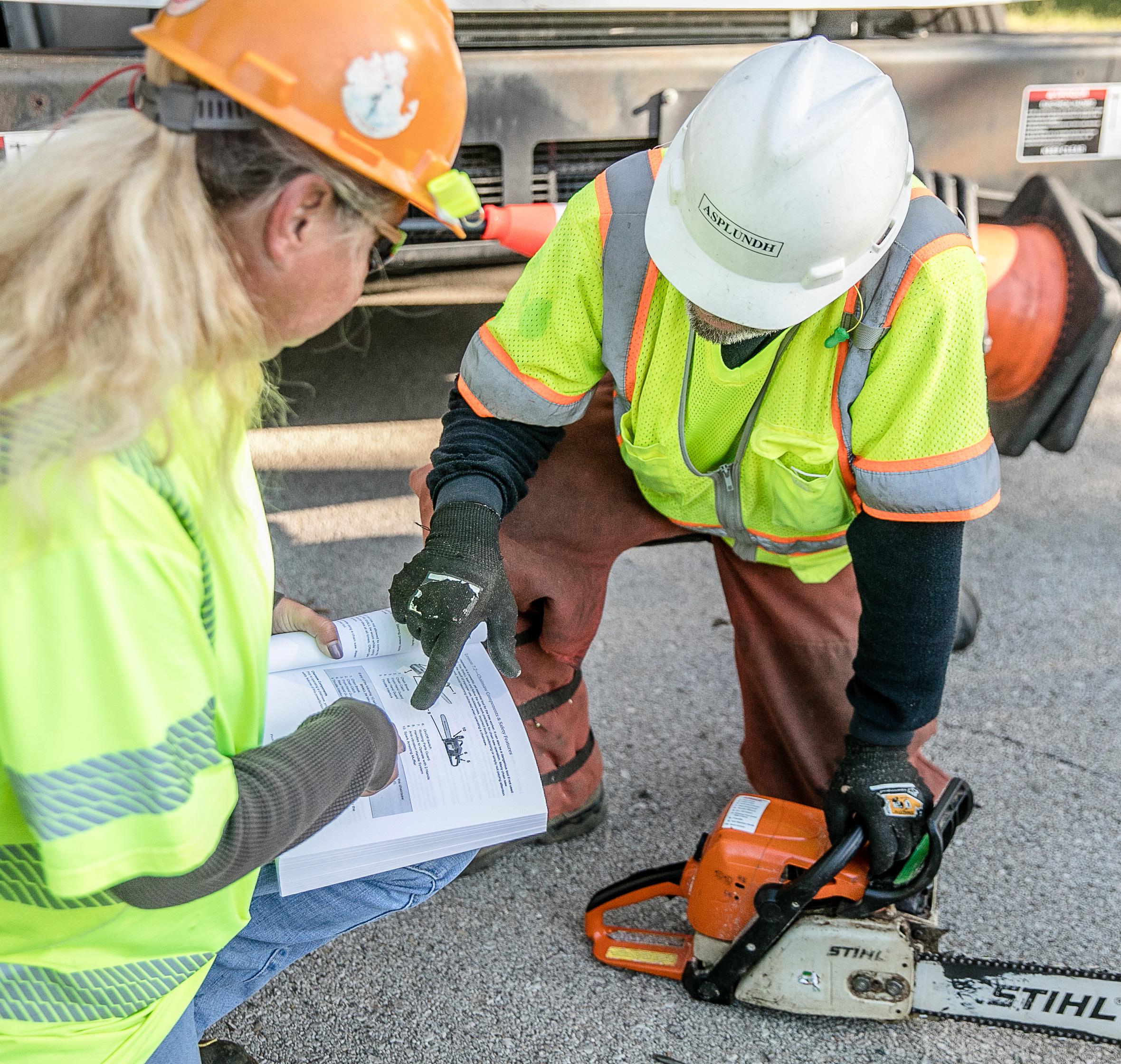
 by Anne Randle, Alabama Director
by Anne Randle, Alabama Director
Despite persisting summer temperatures, many of us are eagerly anticipating the tell-tale sign of fall: brilliant reds, yellows, and oranges in our trees. Fall color is caused by the absence of chlorophylls, the pigment that makes leaves appear green. In the fall, plants simultaneously slow the production of chlorophylls, which are expensive to produce and less efficient in cooler temperatures and shorter days, while simultaneously dismantling the components of chlorophyll and shipping them outside the leaf.
The absence of green reveals other pigments, some newly produced and some which have been hidden all along. Carotenoids, appearing as yellows, oranges, and reds, are present in leaves to act as a sunscreen protecting chlorophylls. As chlorophylls recede, carotenoids are finally revealed. New pigments are also produced to protect cells at the beginning of fall. Anthocyanins, which appear as red or purple, are produced during periods of stress and are common during the low light, drought, and cool temperatures of fall.
Colors are most affected by weather conditions of the previous fall and summer. The best color expression is a product of cool night temperatures, no frosts, bright warm days, no significant rainstorms, and a slight drought heading into fall. Color is also best expressed in healthy trees.
As arborists, we can learn something about what’s going on inside the tree based on the expression of fall color. Trees that repeatedly show early leaf color change or leaf drop may
be stressed. Nutrient deficiency, low pH, disease, or insects can cause low chlorophyll production and early leaf drop. Red anthocyanins may become visible any time of year as a response to nutrient deficiency, particularly phosphorous deficiency. On the other end of the spectrum, trees may continue to produce chlorophyll and remain green much later in the season when heavy applications of nitrogen and phosphorous have been made. These leaves may hold on until a frost finally initiates leaf drop.
The process of leaf drop, or senescence, occurs after plants have mined all the valuable resources from their leaves. An abscission layer forms near where the leaf connects to the stem, and leaves fall from the branch. When everything is going well for trees, leaves change color, the abscission layer forms, and leaves fall. But in periods of acute stress, the abscission layer does not have time to function, and dead leaves remain attached to the tree. In this scenario, the branch or even the entire tree may not recover. While some trees hang on to dead leaves until next year’s spring growth knocks them off (some oaks, hornbeams, and beech), it is typically a bad sign for dead leaves to remain attached to branches.
As we head into fall, frosts and heavy freezes will kill leaf cells, the reabsorption of resources in the leaves will end, and leaves will fall. While we’re busy watching football and preparing for holidays, life continues inside the tree, already covered in the buds of next year’s leaves.

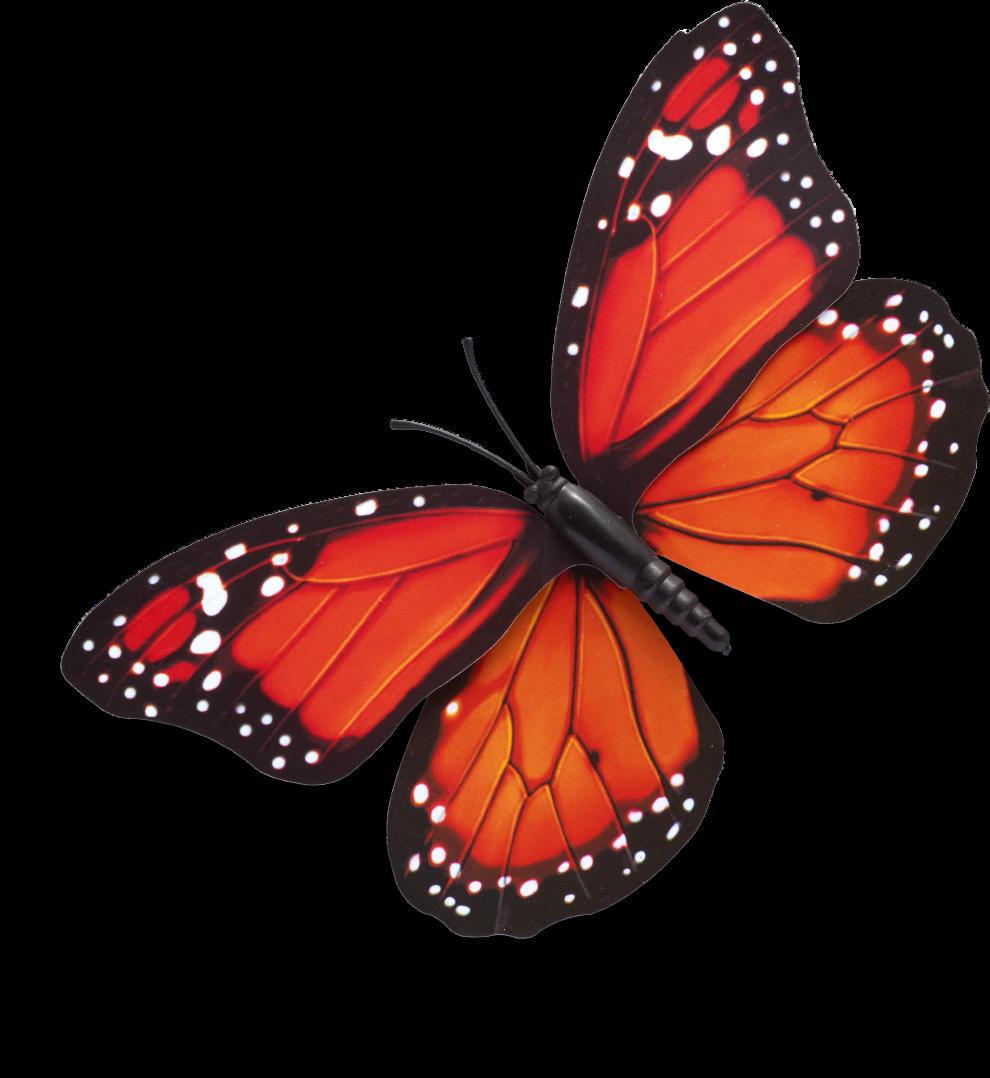


One of the most in-demand courses that the Southern Chapter offers is the Tree Risk Assessment Qualification (TRAQ). It’s a course that requires a lot of effort to ensure that we are complying with all the requirements that are part of earning and maintaining a professional credential from ISA. First step is to have an approved ISA instructor and we are blessed in the Southern Chapter to have Jimmy Walters as our primary instructor. He has taught this course from the day TRAQ began and we are so fortunate to have him share his knowledge and skills. We hear from attendees all the time about his great style!
A successful TRAQ course also requires a place to hold the event. Comfortable seats (but not too comfy!) and a good learning environment are a must. Attendees need to be fed and provided with an ample quantity of caffeine. The material is robust and engaging but, let’s face it, arborists don’t typically sit for eight hours! This means we need a responsible local host who can make these arrangements.
We get a healthy dose of volunteerism at many of our events. A recent TRAQ course held in Hattiesburg, MS, was a great example of all these things and more. City Arborist for Hattiesburg, Andy Parker, was the local host who secured a great location for the course. The old train station in downtown Hattiesburg was the setting and offered a ton of historical interest, including a rumbling train every now and then. We also had a board member from the Southern Chapter, Steve Dicke, on hand to help with arrangements and securing the exam materials.
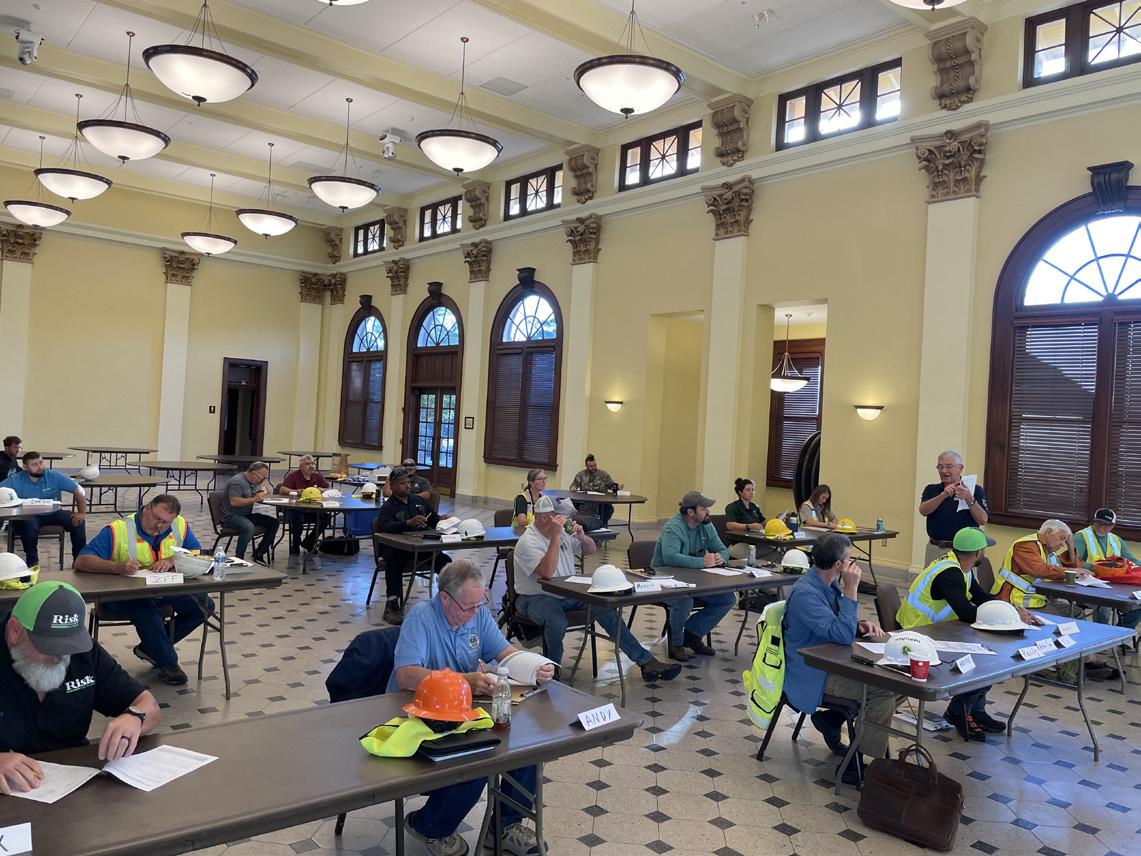
Another popular player at this course was the Mississippi Forestry Commission. Misty Booth with MFC was able to secure a sizeable scholarship for the Mississippi resident arborists attending. Everybody likes a little tuition help every now and then!
Our Chapter is BIG. This is a plus as we can keep membership dues low (we’re the lowest of all Chapters at $30 per year) and offer a full range of programs and events that serve our members and credential holders. But being big can also be a challenge. We rely heavily on local experts like Misty, Steve, and Andy to make these events happen. Think about that next time you wonder why ISA events might not happen as often as you’d like in your area. Step up and volunteer. We’ll be happy to put you to work!
I can’t recall an event that a member asked us to hold that we couldn’t eventually organize and handle. TRAQ was taught in Puerto Rico last year for the first time, and we try hard to respond to requests to “do something” in your neck of the woods. Just realize that if you ask for an event near you, we just might put you to work! Many thanks to all of you who reach out and ask ... and most of all to those who step up to volunteer.
Check
Award

Southern Chapter’s
awards page for an impressive
nomination form.


Gloomy scale (Melanaspis tenebricosa) is a native, armored scale insect that feeds on the bark, branches, and twigs of trees. The insect feeds on tree sap under neath waxy protective material that resemble convex lenses and are referred to as “tests.” Gloomy scale appears to be more abundant in urban than in forested settings. A positive association of scale body size and population growth with warmer urban areas and higher cover of impervious surfaces has been reported. The scale distribution range is wide, occurring throughout the southeastern U.S. from Florida to Maryland and west to Texas. The scale has one generation per year. Heavy infestations cause branch dieback and canopy thinning followed by tree death in most serious infestations.
Host: Most susceptible host is red maple (Acer rubrum) but other hosts include sugar maple (Acer saccharum), boxelder (Acer negundo), silver maple (Acer saccharinum), yellow poplar (Liriodendron tulipfera), elm (Ulmus spp.), and sweetgum (Liquidambar styraciflua).
Signs and Symptoms: Adult female covers, which are called tests, measure 2-3 mm in diameter and cover the bark of branches and twigs giving them a bumpy, warty look. The tests are dark gray to brown in color and are circular for females but more oval and smaller for males. Scale tests remain attached to the bark and are the best in dicators for scale presence. Crawlers and nymphs can be observed during the summer. Mature females under tests are pink, wingless, and legless, whereas males develop wings and legs but have a very limited life span.

Management: Red maple trees planted in areas sur rounded by impervious surfaces such as roads, buildings, and parking lots would be at more risk of gloomy scale threat. Matching species to site in planting operations is best preventive measure. Cultural practices that improve water and nutrient resources for trees would reduce haz ard potential. Low pressure water sprays during dormant season can be used to remove scales in light infestations, whereas chemical treatments with foliar insecticides and/ or bark oil sprays may be needed in heavy infestations when cost-to-benefit of tree removal favor treatment.
Happy fall from Louisiana! Here we are, coming up on three full years with Covid; I was able to avoid it all this time … until the last day of the 2022 Tour des Trees. What a shame! After tooling around in Iowa for almost a week, we pedaled our way to Nebraska City, home of the Arbor Day Foundation tree farm and lovely lodge. I am afraid I’ve not much to report to you on that end, but I heard from others it was great! Another really great thing that happened in the 2022 Tour des Trees was that I got to ride tandem with Professor Elwood Pricklethorn (aka PEP). What a blast. If you are unfamiliar with his –ah– work, check out his YouTube channel. And fabulous news, the riders raised more than $277,000! Among the riders, two represented the Southern Chapter, yours truly and Matthew Searls. If you want to experience this amazing event yourself, consider participating next year in Lake Tahoe and Reno. Thank you so much to Southern Chapter (that’s you folks) for the support.
As we find and settle into our new “normal,” enjoy the few advances the pandemic brought: Zoom, Teams, more flexibility (technologically speaking) than I have ever seen. In my home state of Louisiana, we have licensed arborists who routinely get their CEUs online. That may be old hat for many of you, but it’s a giant step forward for most everyday commercial tree care specialist. What other silver linings to the dark Covid cloud will present themselves in the months to come, I wonder.
I look forward to seeing each of you out and about over the next few months. Until the next time.

Manufactured in the USA, the Mini-Jarraff Urban Tree Trimmer is designed for Right-of-Way maintenance and tree trimming operations in neighborhoods and other municipal settings. The Mini-Jarraff is simply the smartest way to trim trees. Contact Jarraff Industries today.
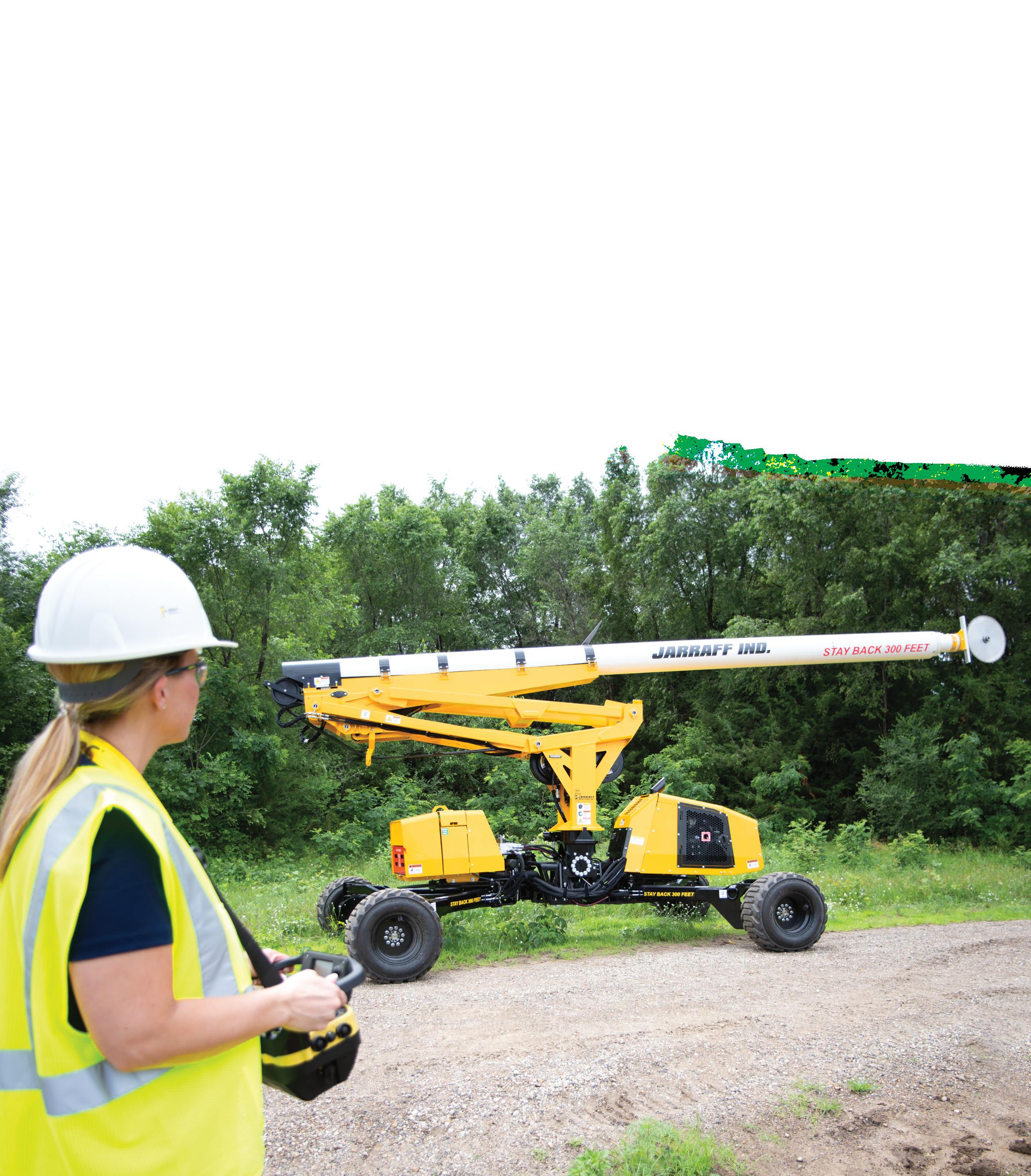
If there is one thing we know about invasive species, it’s that they are usually pretty good at spreading from place to place. On the heels of the southern-most detection of the spotted lanternfly in the North Carolina Piedmont in June, a second invasive insect was detected in North Carolina for the first time this summer; in August 2022, the elm zigzag sawfly was found in Surry and Stokes County. Like the spotted lanternfly, this insect was previously known to occur in more northern areas and is making its way south.
Elm zigzag sawfly larvae feed exclusively on elm trees and can cause severe defoliation. Young larvae create characteristic (and namesake) zigzag pattern in leaves, while older larvae feed more broadly, leaving behind only thick leaf veins. This damage can range from minor and unnoticeable to near-complete defoliation.
Long-term impacts to tree health are simply unknown at this time. Generally, defoliation does not cause significant impacts to tree health and trees are able to re-leaf the following season. However, there are exceptions to this rule (e.g., spongy moth), especially when defoliation occurs year after year.

One of the concerns with this insect is its capability to grow to large populations. While it’s currently uncertain for the South, in other areas, multiple generations of elm zigzag sawfly occur each year. In the warmer climate of the South, we expect the same. To make matters worse, the elm zigzag sawfly reproduces parthenogenetically, which means females reproduce without mating. In fact, no males of this species have ever been observed! Between our warm climate suitable for multiple generations and the capacity of this insect to reproduce quickly without the obstacle of mate-finding, populations may have the opportunity to get quite large in the South.
Right now, effective management for landscape trees is unknown. Options for other sawfly species include systemic insecticides and field trials for their efficacy against elm zigzag sawfly are anticipated.
While elm zigzag sawfly is new to the South, it’s also very new to North America. The elm zigzag sawfly is native to Asia. In 2003, it was found in Europe, where it is considered an invasive pest. It was first found in North America in 2020, when it was detected in Québec, Canada. The next year, the first U.S. detection in Virginia occurred, and in 2022, it spread to North Carolina.
The elm zigzag sawfly is a strong flyer as an adult and will likely continue to spread. It can disperse up to 28-56 miles in a year. Moreover, they can hitchhike on plants or in soil or as cocoons attached to various objects. If you see elm zigzag sawfly in a new area, be sure to report it to local state authority.
 Young elm zigzag sawfly larvae create zigzag patterns in leaves as they feed (above). As they grow, they consume nearly the entire leaf.
Large populations can cause severe defoliation of elm trees (below).
Photo credit: Kelly Oten
Young elm zigzag sawfly larvae create zigzag patterns in leaves as they feed (above). As they grow, they consume nearly the entire leaf.
Large populations can cause severe defoliation of elm trees (below).
Photo credit: Kelly Oten


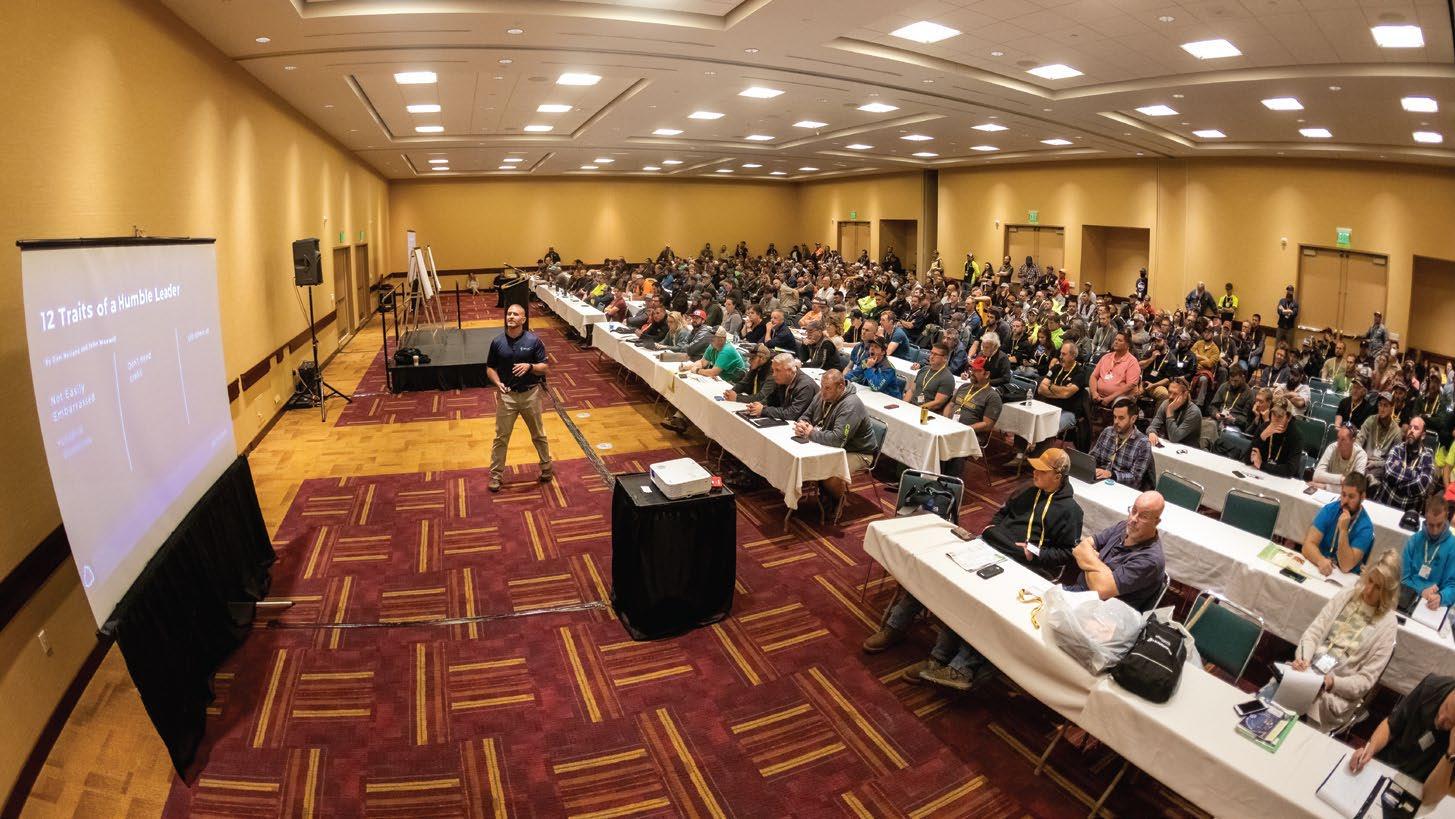
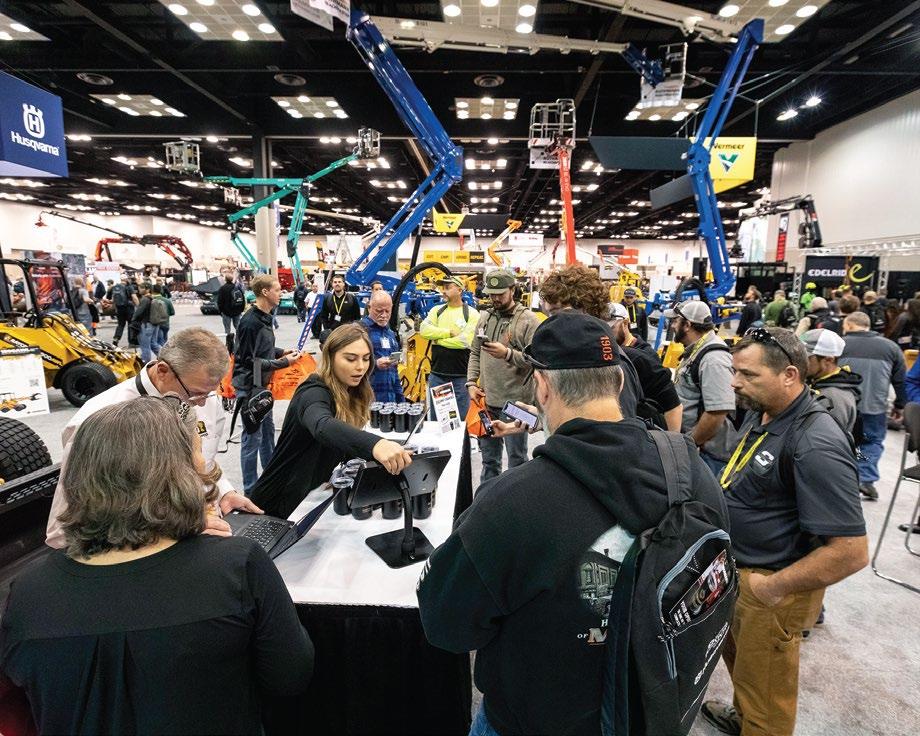

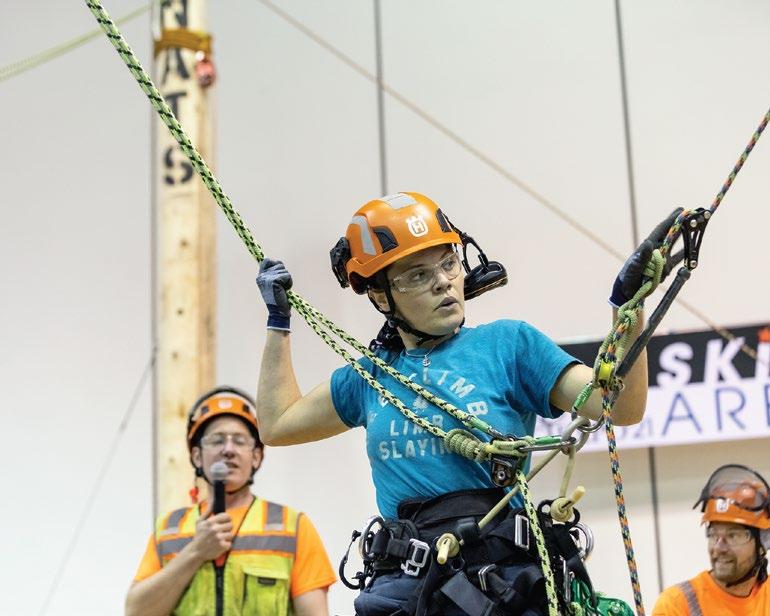

Check out all the new CEU opportunities listed in the next few pages of this publication. This list is kept current on the Southern Chapter website as well. Save the site to your “favorites” as an easy access portal for events and registration information. If you know of opportunities we haven’t listed, please share! Email skincaid@isasouthern.org and we’ll get it posted.
While many of the face-to-face workshops and conferences have been canceled, we have worked hard to partner with organizations to be sure you get a wide range of opportunities to stay sharp. This list contains upcoming events that we are aware of. All the courses and conferences listed provide opportunities to earn ISA CEUs that help you maintain your ISA certifications.
ISA is also offering no cost quizzes for articles to give you more opportunities to earn CEUs.
TREE Fund
Urban Forestry Today
Forestry Webinars
Urban Forest Connections USDA Forest Service
Utility Arborist Association
North Carolina Urban Forest Council
Arborjet Webinars
Professional Arborists Association of MS (PAAM)
Alabama Extension
Rainbow Treecare Scientific Advancements Webinars

October 19-21, 2022
Equip Exposition Louisville, KY
Most events are approved for ISA CEUs. Check each registration site for details.
October 27-28, 2022 Trees SC Annual Conference Greenville, SC
The Equip Exposition is the place to go to find the latest in landscape techniques and technology. The Women’s Tree Climbing Workshop will give talks on climbing and rigging techniques. There will be 7 free talks (with your paid registration) and 2 paid workshops available. All sessions will offer ISA CEUs. Come see the sugar maple growing out of Freedom Hall. Information and registration information HERE
October 20, 2022 11am- Noon Central Webinar: Green Spaces and Childhood Development
Presenter: Ashley Kite-Rowland
The Tennessee Urban Forestry Council presents this much needed topic that addresses the social values of trees in our world. Information and registration information HERE
October 25-29, 2022 in Manati, Puerto Rico
November 2-4 in St. Croix
Nov 5 in St. Thomas, US Virgin Islands
Nursery Workshop for reforestation and restoration tree growers
Practices covering a variety of topics including: species selection, container choice and growing media characteristics, nursery environment, propagation protocols, pest and disease management, seed collection and storage, seedling quality, and successful outplanting. This workshop will also include planning sessions, networking, and on-site visits to local nurseries and planting sites. Information and registration HERE
Join Trees SC for this two day conference highlighting several energetic community forestry topics. Information and registration information HERE
November 2, 2022 8am - 3pm Eastern TRAQ Renewal VIRTUAL Course Registration is now closed
November 8, 10, 15, 17, 2022 Noon-1:00pm Central Webinar: Introduction to Plant Pathology Instructor: Dr. David Appel
ISA Texas Chapter has put together a fantastic series of webinars. Over several noon meetings, you can gain a greater understanding of plant pathology, integrated pest management in the landscape and be able to identify common disease problems in the landscape Information and registration information HERE
November 9, 2022 11am- Noon Eastern Webinar: Introduction to Decay in Trees Instructor: Dr. Barb Fair Decomposition is a normal process in the life cycle of trees. Urban foresters, however, can take steps to prolong the life of trees and delay when tree decomposition occurs. During this webinar Dr. Fair will identify which organisms facilitate tree decay and in what manner. Additionally, she will explain how you can protect trees from infection and treat trees that display wood rot. Information and registration information HERE
November 9-10, 2022
Certified Arborist Preparation Training
Raymond, MS
Join the folks from Mississippi State Extension and the Professional Arborist Association of Mississippi for their annual certified arborist prep course. An excellent line up of presenters is on tap for this two day course. Information and registration information HERE.
November 9-10, 2022
Growing Greener Tennessee Communities Burns, TN
Keynotes: Rachel Comte; Dr Cecil Konijnendijk; Meg Morgan
The Tennessee Urban Forestry Council has put together a stellar conference that includes two days of presentations and networking opportunities that will be of interest to arborists with interest in urban and community forestry. More information HERE.
December 14-15, 2022
Certified Arborist Preparation Training
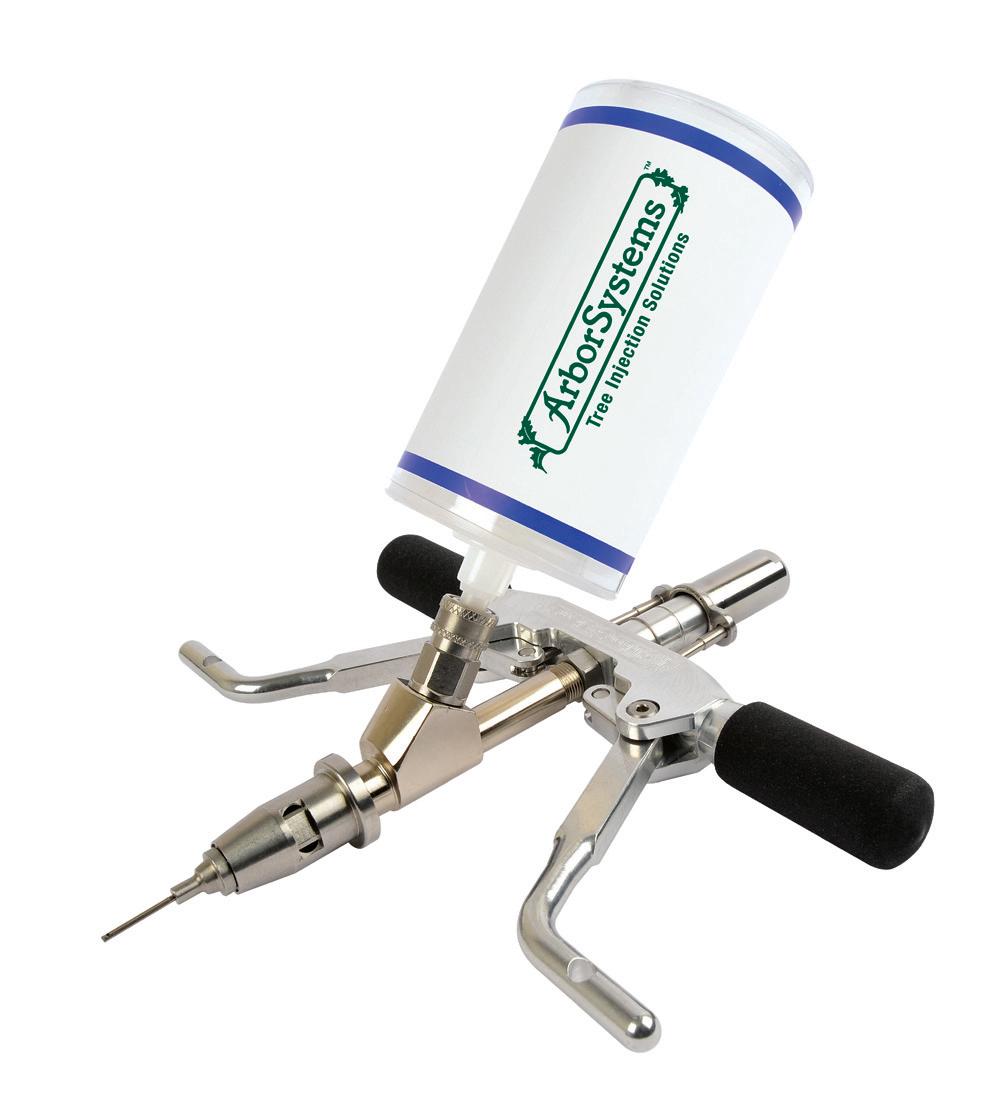
Greensboro, NC
North Carolina Urban Forest Council is hosting this two-day prep course to help individuals study, learn, and review, prior to sitting for the Certified Arborist exam. The exam is being offered the day after the course, but registration for the exam is separate and not included in the prep course fees. Information and registration for the Prep Training can be found HERE
December 16, 2022 9:00am-12:30pm Eastern
ISA Certified Arborist, Utility Arborist, Municipal Sp EXAM
Greensboro, NC
ISA Certified Arborist, Utility Arborist, and Municipal Specialist Exams are scheduled for December 16, 2022. Applicants for the exam must register by November 30, 2022 at the ISA website. Registering for an exam includes creating or logging in to your ISA account at https://www.isa-arbor.com/ and then clicking to find the test date and location.
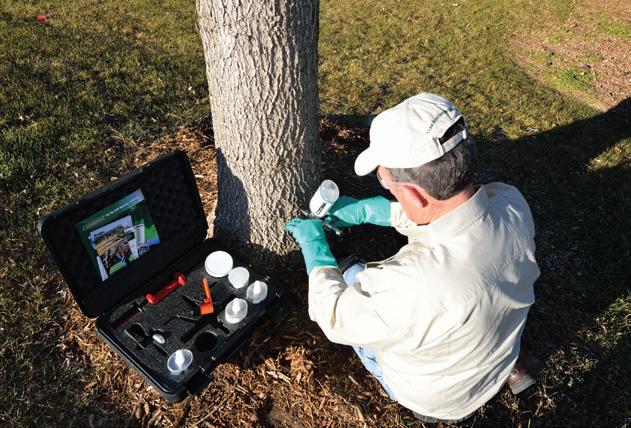
January 16-18, 2023
NC Nursery and Landscape Association Green and Growin’ Conference
Greensboro, NC
Check out this three-day event with plenty of material for arborists. Information and registration information HERE.
January 19-20, 2023
Annual Meeting of the Professional Arborist Association of MS Starkville, MS.
The Theme is “Trees Are Us.” Arborist CEUs 8 hours with an early registration. Topics include research results on wildlife use of urban corridors and ground penetrating radar. For more information visit www.paam-ms.com. Following the meeting on January 20, we offer an ISA Certified Arborist, Utility Specialist, and Municipal Specialist Exam. A separate Exam registration is needed at www.isa-arbor.com.
Nearly two decades ago, I was incred ibly young, and incredibly newly married. Still trying to understand what exactly it meant to have in-laws, while they were try ing to comprehend their youngest daughter now having a husband, conversations were every bit as awkward as you’d expect. We latched on to anything that seemed like a safe topic, and one of those we quickly found was trees and plants in general.
My mother-in-law is first generation Dutch, and they moved from the Neth erlands in the fifties when she was three. Eventually they came to call Norfolk, Vir ginia, home, and set up a greenhouse (I’m not sure it couldn’t get more stereotypical short of erecting a windmill), and that was their family business which is still run by one of her brothers to this day. I was just beginning my career in arboriculture, and suddenly we could carry on a conversation for more than four minutes. I found out about my mother-in-law’s love of Japanese maples, and on Mother’s Day gave her the largest I could afford at the time. To be clear, it was a sapling. She kindly made a big to-do about it, eventually planting it in their back yard.
Though we get back up to visit my wife’s family quite often, they are typically whirlwind trips seeing everyone we can manage in a short amount of time. Unfor tunately, that means tours of the back yard aren’t usually on the itinerary, and so I was quite shocked to see what that sapling had become when we stopped by in August. And I thought it made me feel old seeing my kids grow up. While there, my motherin-law, who I can talk with quite happily now about more than just trees, thank you, gave us a cutting she’d propagated from my Japanese maple, which we’ve now planted in our yard.
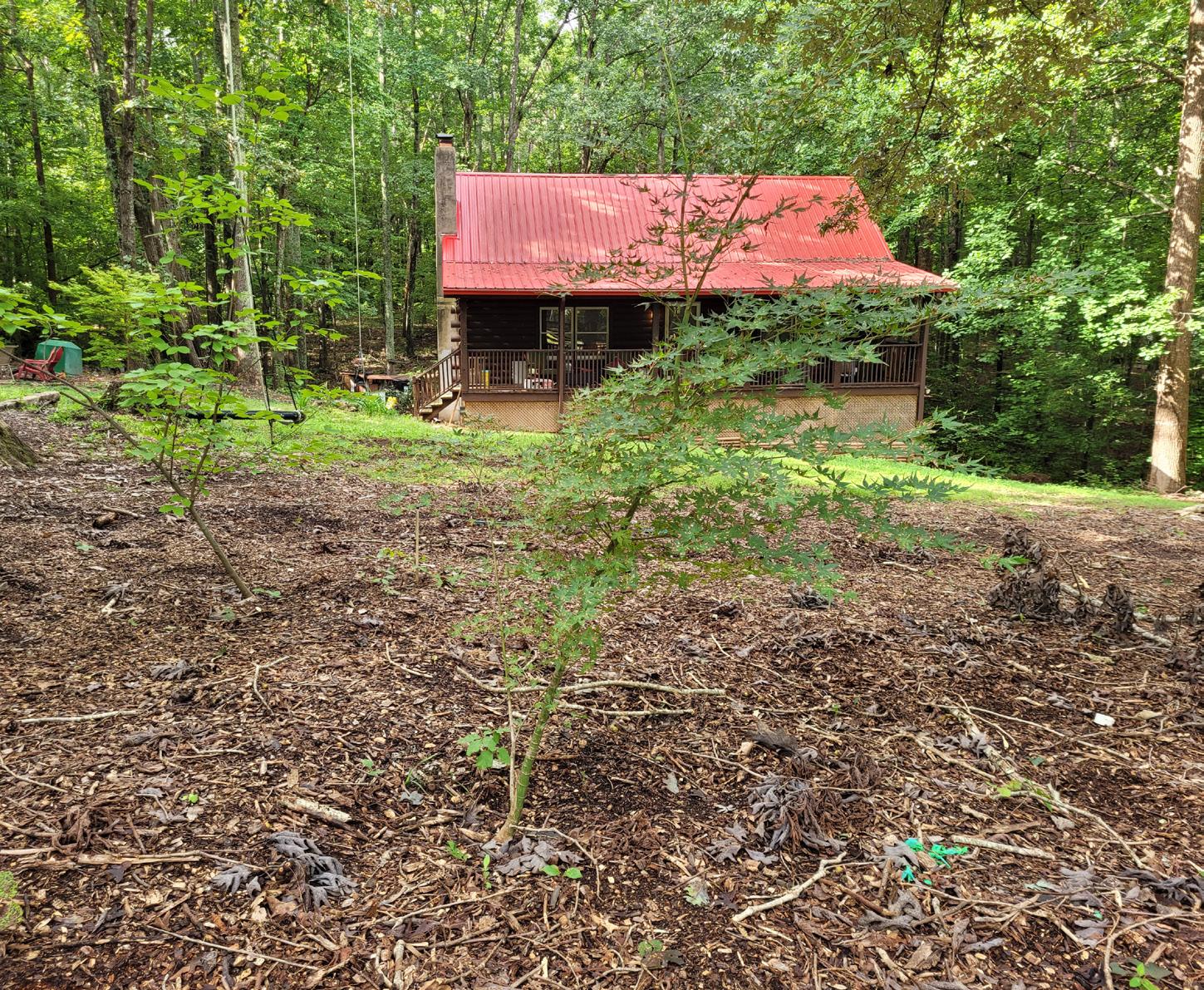
As arborists, most of us can point out trees that we’ve pruned, planted, or oth erwise cared for over the years, but it was my first experience having everything come full circle quite like that. For me it impresses the dignity and importance of our profession, and the impact we can have on people’s lives every day, for years and decades to come.
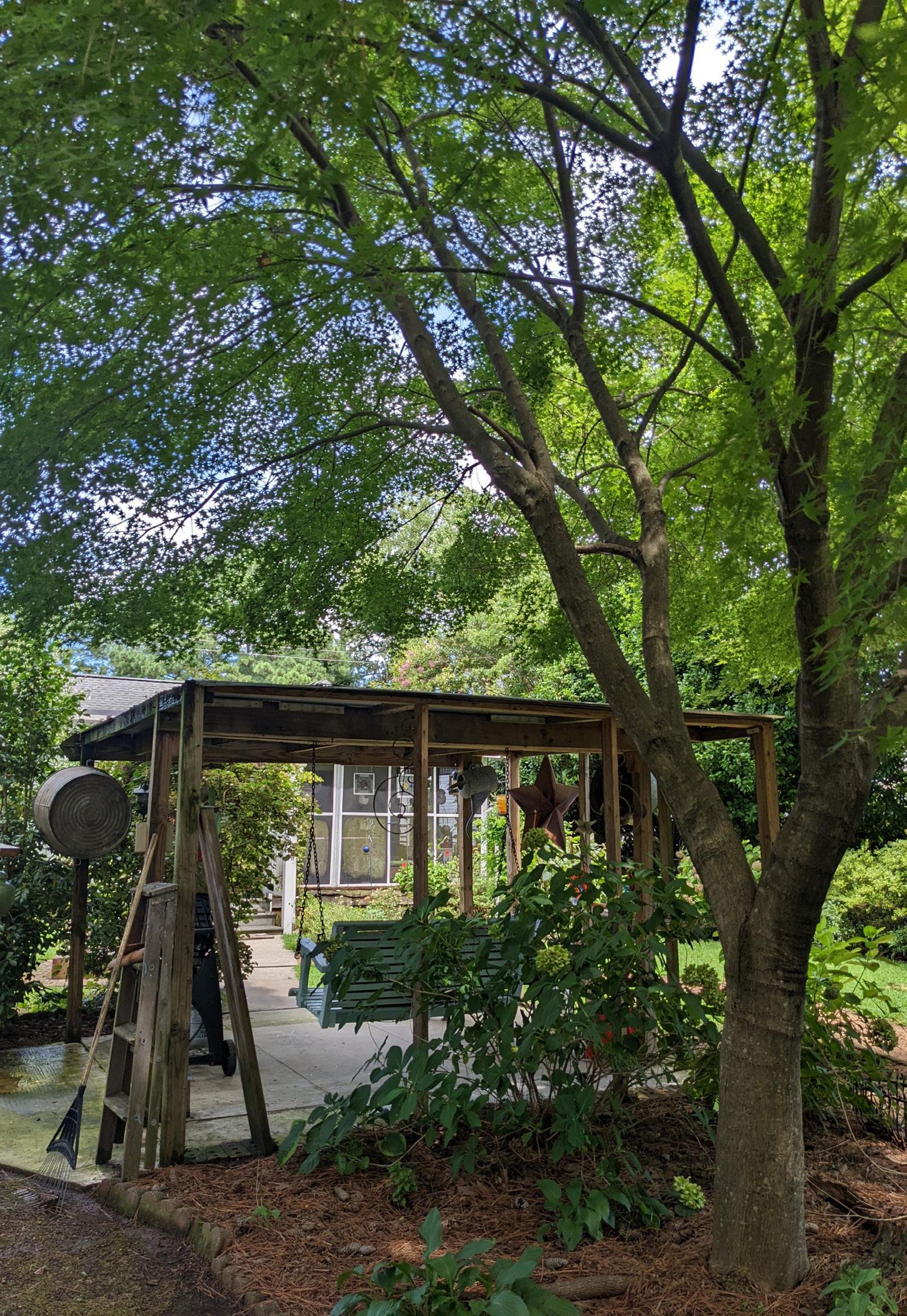
Hello, fellow tree people. It has been a while since I have provided an update on what is happening in North Carolina, so I will do my best. If you are an NC resident or are aware of something tree-related going on in NC, I hope you reach out and let me know. There are a couple of things that I thought might be of interest to this group.
Workforce development for the tree care industry continues to be a focus in NC. Alamance Community College will again be offering their arboriculture certificate program beginning in December 2022. Last year was the first time the program was offered and there were 10 students who completed the 16-week course. During the course, students received expert instruction on tree climbing, advanced arboriculture, pest management, equipment safety, and were hosted at Bartlett Research Laboratory in Charlotte for a day of interactive learning.
The second round will run from December 2, 2022, until March 24, 2023. The program is a hybrid in-person and online course, offering some flexibility for those enrolled and hopefully limiting travel requirements for the students. This certificate program is geared toward training opportunities for those interested in arboriculture or those who are already in the arboriculture industry and would like to expand their knowledge base. You can register online for the course until the end of November. The NC Urban Forest Council and NC State University are working with Alamance Community College to bring this certificate program to other community colleges across the state.
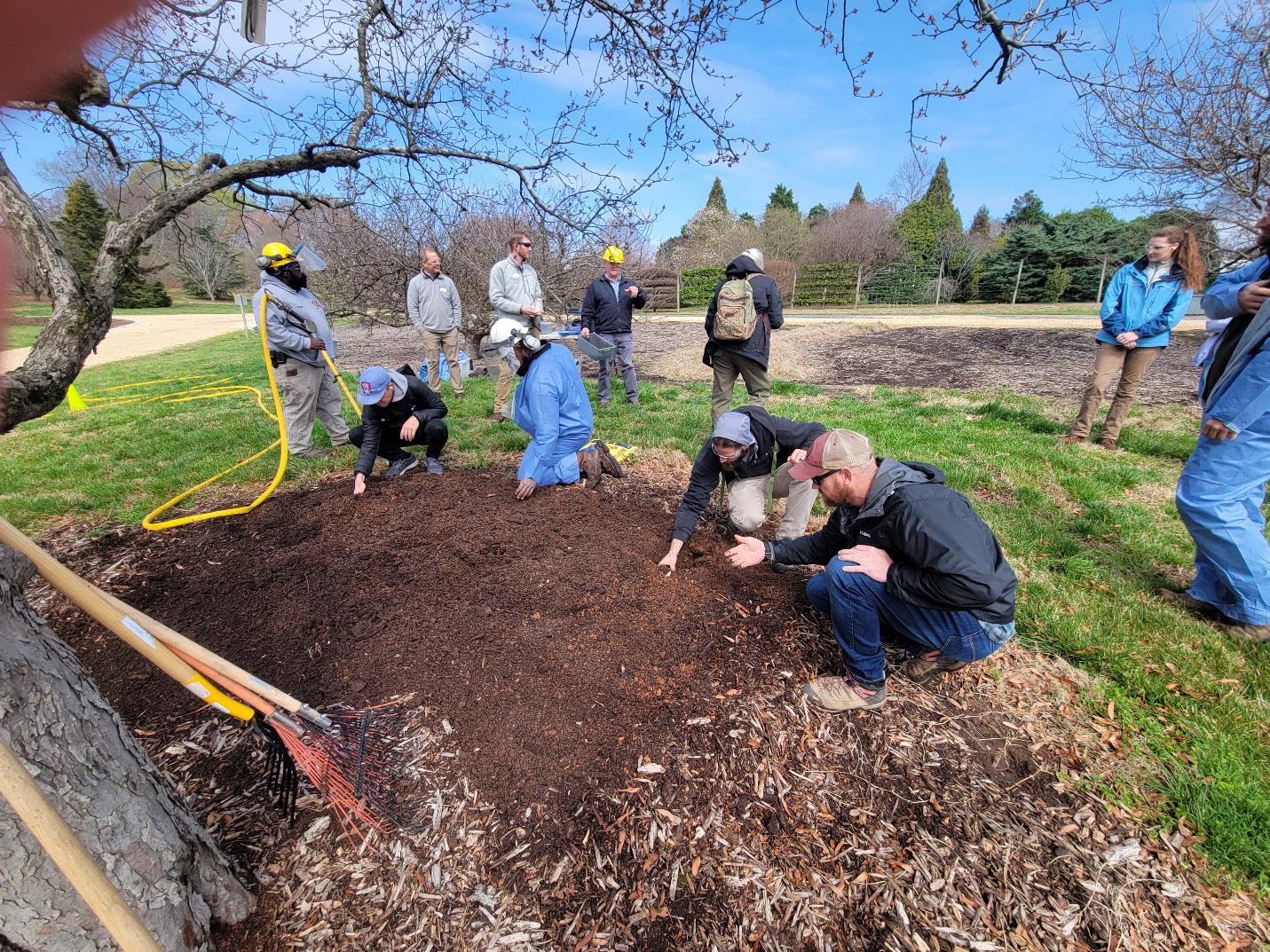
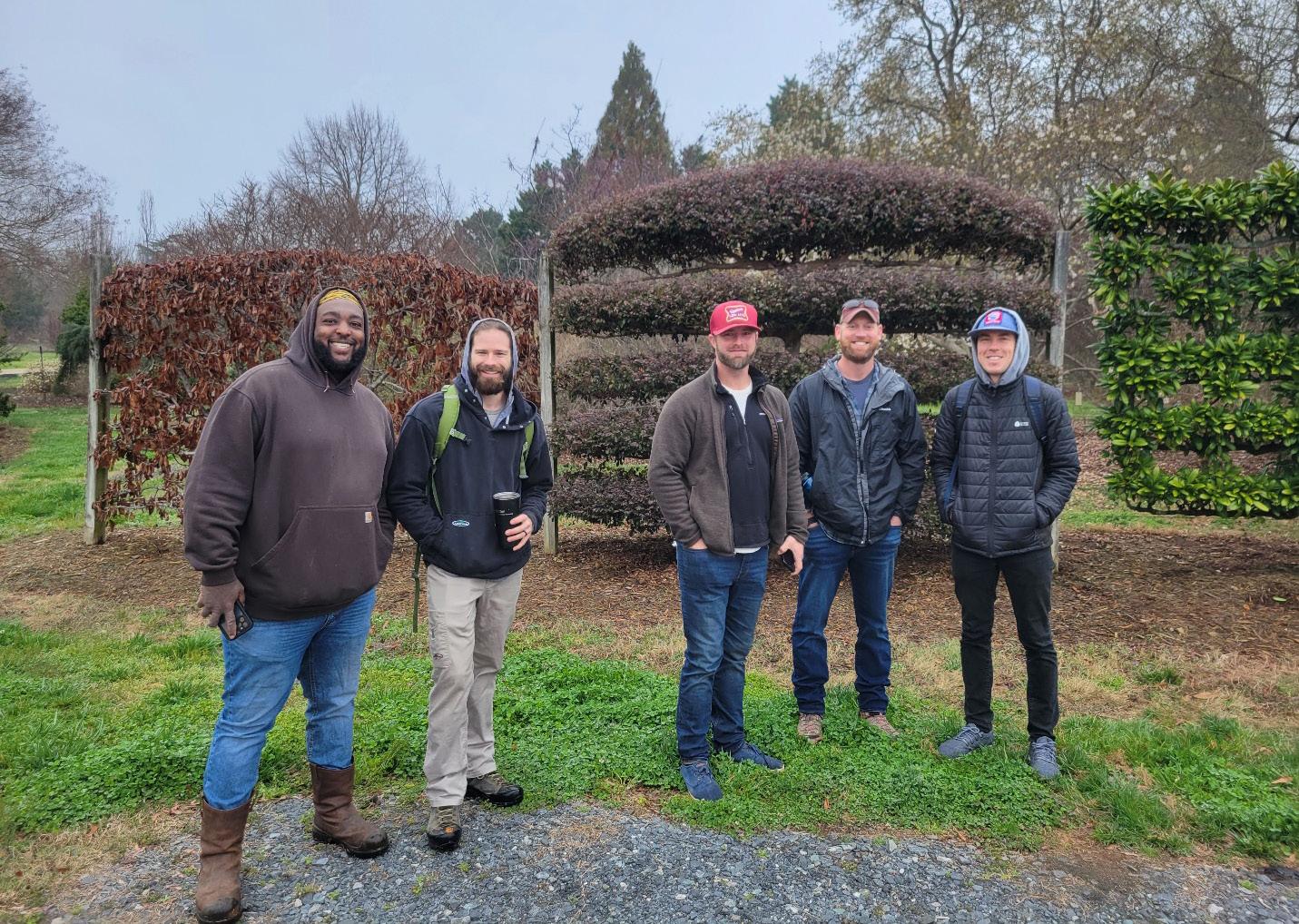
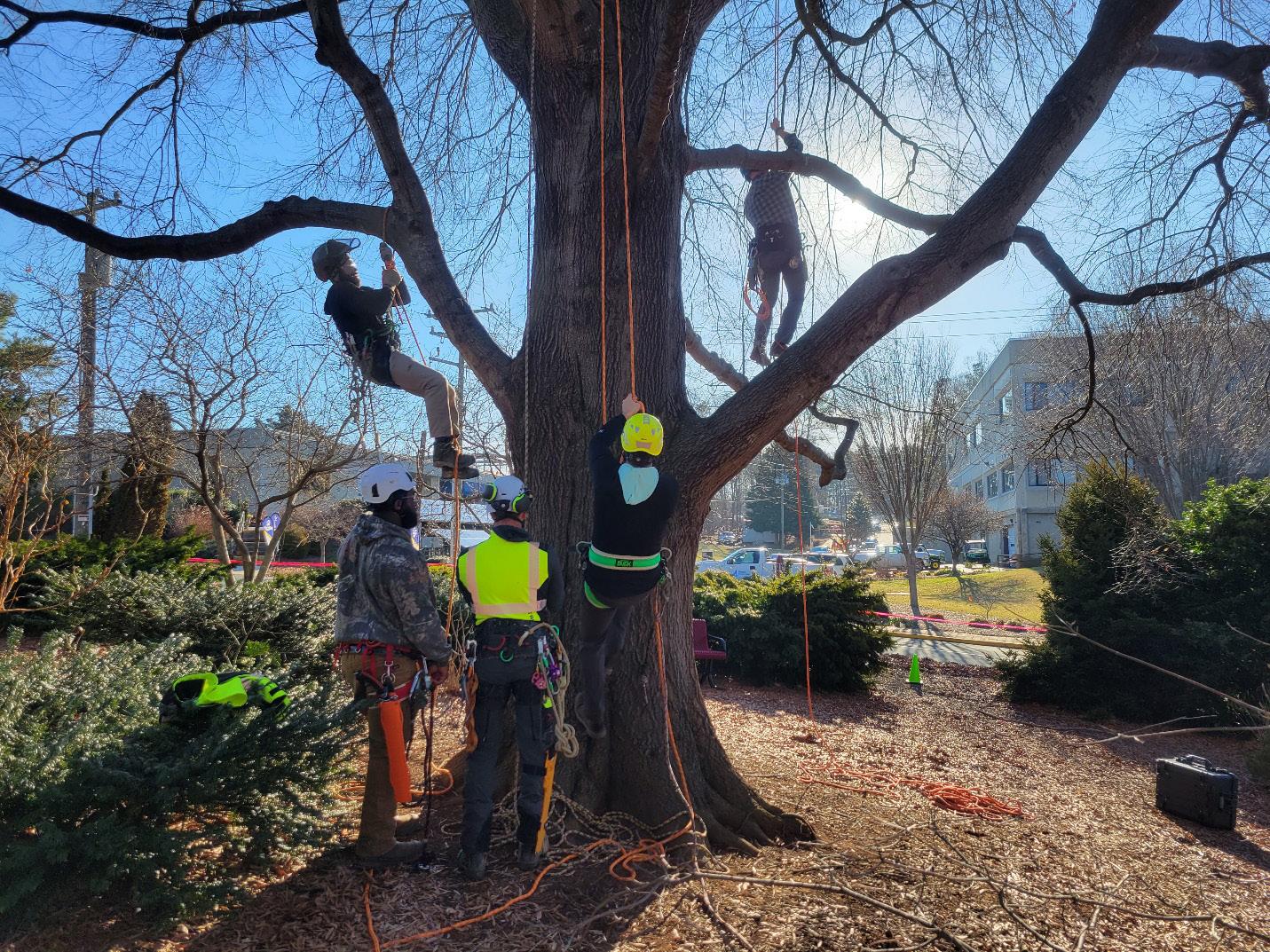
Another great opportunity for the tree care industry in NC is the newly established apprenticeship program. The Horticulture Technology department at Alamance Community College has worked to become a host for an apprenticeship program focused on the green industry including arborists. This program is great because it is helping provide education to our industry members just starting out with their career or those who have been in the industry and are wanting to gain more formalized training. The industry members can earn a two-year Associates in Applied Science degree in Horticulture Technology while gaining on-the-job training as they work with an industry partner company. This is designed for companies of all sizes.
If you are interested in the certificate program, becoming an apprentice, or signing your company on as an industry partner, please email Liz Riley or call 336-506-4192.
One last item I thought might be of interest is a new online platform that NC Forest Service is developing with PlanIt Geo for tree inventories and urban tree canopy studies. Andy Pleninger, the NCFS’s Urban & Community Forestry Program Head, introduced the platform at the 2022 Great NC Tree Conference in Greensboro. The online tool will be a way to compile and share community tree data with the public and other urban forestry stakeholders to help guide management and policy decisions. Existing tree inventory and tree canopy data can be uploaded to the site to create a more complete picture of urban forestry in NC. The online tool should be available by the end of 2022.
Participants in Alamance Community College‘s arboriculture certificate
One of the

that
by Amanda Whittonnoticed as a new arborist is the interconnected nature of
support that the organizations of our industry such as the ISA
and events that benefit and highlight the profession
operations. When I decided to become involved with the greater workings of this community and participate in the various avenues it has for networking and skill development, the Southern Chapter stepped up and helped me make it happen.
In June, the Women’s Tree Climbing Workshop held its inaugural workshop in North Carolina, with the Southern Chapter as a sponsor of the weekend. For those of you who aren’t familiar with WTCW, it’s an incredible woman-run organization that provides a space for women and woman-identifying arborists to grow and learn among fellow female tree climbers. Participants spend Friday through Sunday progressing through climbing styles and techniques, familiarizing themselves with everything from the Blakes Hitch to single-rope systems, all while forming relationships and bonds that last for the duration of their tree-centric careers. It was an incredible gift to have the Southern Chapter sponsor this workshop and support a mission that I have become quite attached to: bringing more women into this incredibly versatile and rewarding field. It’s not often you have an organization so fully behind your efforts, and it meant a lot to have this backing, to me personally and to the workshop.
Then, in early August, I went to the North American Tree Climbing Competition in Minneapolis. I am an incredibly new competitor and the prospect of competing,

let alone flying out-of-state to compete, was daunting and slightly overwhelming. The Southern Chapter once again came through and sponsored my entry into the competition, as well as answering the numerous questions I had about pretty much everything I was getting myself into.
Competitions absolutely cannot be beat for bringing arborists together. I’m not a particularly competitive person so I haven’t had much experience with meets or matches, but no one I met skipped a beat when I told them I was new. They all welcomed me into the ring (as it were), providing advice, sideline encouragement, and ... when mine got crushed into dysfunction ... even throwball cubes.

I still get the butterflies day-of, but knowing what I can expect when it comes to a cheering squad and coaching section has me already looking forward to the next comp. Without a doubt, I highly recommend new climbers attend and compete in any competition they can. Sure, it’s nerve-wracking sometimes, but you can’t go five minutes without someone offering a helpful hand, watching an incredible climb, or learning a slick new trick. Plus, you get to see the best-of-the-best do what they love and be part of the community that celebrates when they do it.
Come to think of it, that request for competition attendance goes out to all those long-timers in arboriculture as well. It’s y’all
that we newbies are looking at so starry-eyed, and it’s y’all who help us see the ways we can improve and grow.
To sum it up, this summer has been an incredible ride of participating in the type of events where this industry shines. Bring any two arborists together and you’ll end up talking about something tree-related, so bring a whole group of them together and it’s off to the races. Both the WTCW and NATCC were such events, and both have irrevocably changed my path in arboriculture. I can’t thank the Southern Chapter enough for helping make both happen, and I look forward to many more of these events in the future.
More than 50 years ago, we published This We Believe, a safety declaration that focused on the well-being of our people, families, and communities. It established safety as a value in our culture, not a mere priority or slogan, and defined safety as a moral obligation that is everyone’s responsibility.
This we still believe.
Learn about Davey’s commitment to safety by scanning the code.
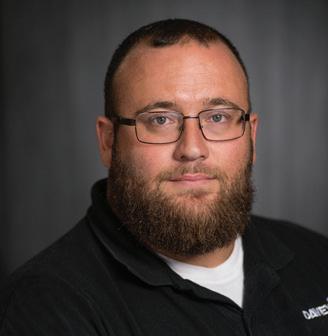


“Safety is a VALUE. If someone classifies it as a priority, I believe they may be in the wrong line of work.”
Joshua Pressley, Account Manager
President: Jeffrey Morgan, Georgia Transmission Corporation
Executive Director: Skip Kincaid
President Elect / Treasurer: Matt Searels, CN Utility
Vice President: Hallie Dozier, LSU AgCenter
Chapter CoR Rep: David Vandergriff, Griff Arbor|Hort Tree Climbing Championship: Scott Winningham
TREE Fund Liaison: (open)
Past President: Kasey Krouse, City of Knoxville Media Director and Editor: Sarah Mitchell Conference Planner: Connie Hilson
Alabama: Anne Randle City of Auburn
Arkansas: Patti Erwin Natural Resource Planning
Georgia: Gregory Dorch Georgia Power Company
Louisiana: Brian Watkins BREC
Mississippi: Steve Dicke Shady Arbor PLLC
North Carolina: Leslie Moorman NC Urban Forest Council

Puerto Rico and U.S. Virgin Islands: Christian W. Torres Santana Coccoloba Environmental and Agricultural Consulting
South Carolina: Sara Hollar City of Columbia
Tennessee: Wes Hopper City of Germantown
At-Large: Chris Diffley Heartwood Tree Service
Southern Chapter ISA Website: www.isasouthern.org Phone: (888) 339-8733
Skip Kincaid, Exec. Director 1609 Missouri Avenue St Louis, MO 63104
daily posts of things to make
think and things to make
the jokes, please.
Find news, articles, and educational

This is where green-industry
To contact your State Director, a member of the Executive Board, or Skip Kincaid at the Southern Chapter office, please email isasouthern@isasouthern.org
you been waiting for an invitation?
is: